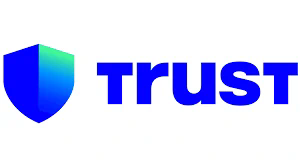# Understanding Trust Wallet and Its Features
## Introduction to Trust Wallet
Trust Wallet is a decentralized cryptocurrency wallet that allows users to store, manage, and transact with a variety of different digital assets. Launched in 2017, this wallet has gained popularity for its user-friendly interface, robust security features, and support for numerous blockchain networks and tokens, including Ethereum, Bitcoin, and Binance Smart Chain, among others. One of its unique selling points is that it gives users the private keys to their wallets, ensuring that they maintain complete control over their assets.
## How Trust Wallet Works
### Wallet Infrastructure
At its core, Trust Wallet is a non-custodial wallet. This means that the wallet service does not retain any user’s private keys. Instead, the private keys are stored locally on the user’s device, with the user having full control and responsibility for their security. This design mitigates risks associated with centralized exchanges, where users are susceptible to hacks or operational failures.
### Multi-Asset Support
Trust Wallet supports a wide variety of cryptocurrencies and tokens. It integrates seamlessly with popular blockchains, offering a broad array of digital assets for trading and storage. Users can receive, send, and swap cryptocurrencies without the need for a centralized exchange, making it an appealing option for both novice and experienced cryptocurrency enthusiasts.
## Transferring Money from Trust Wallet to Bank Account
### Overview of the Process
Transferring funds from Trust Wallet to a bank account is not as straightforward as a traditional bank transfer. Since cryptocurrencies operate on decentralized networks, converting your Bitcoin, Ethereum, or other crypto assets into fiat currency (like USD or EUR) requires an intermediary step involving a cryptocurrency exchange. Understanding this process is essential for anyone looking to access their funds in a bank account.
### Step-by-Step Guide
1. **Convert Cryptocurrency to Fiat**: The first step in transferring money from Trust Wallet to your bank account is to convert your cryptocurrency into fiat currency. You can do this by using a cryptocurrency exchange that supports both your asset and your local currency.
2. **Choose a Cryptocurrency Exchange**: Popular exchanges like Binance, Coinbase, and Kraken allow users to trade cryptocurrency for fiat. Make sure the exchange you choose supports the conversion of your specific cryptocurrency and can facilitate bank withdrawals.
3. **Transfer Crypto from Trust Wallet to Exchange**: Once you’ve chosen an exchange, you’ll need to transfer your crypto from Trust Wallet to the exchange. To do this, navigate to your chosen exchange, find your deposit address for the specific cryptocurrency you’re sending, and initiate a transfer from your Trust Wallet to this address.
4. **Sell the Cryptocurrency for Fiat**: After the transfer is confirmed on the blockchain, you’ll see the funds in your exchange account. You can then proceed to sell the cryptocurrency for the fiat currency of your choice.

5. **Withdraw to Bank Account**: Finally, once your cryptocurrency has been converted to fiat and is available in your exchange account, you can initiate a withdrawal to your bank account. Most exchanges have user-friendly interfaces to guide you through this process and typically require you to link your bank account beforehand.
### Timeframes and Fees
The time it takes to complete the transfer from Trust Wallet to your bank account can vary widely based on several factors, including blockchain transaction times and the withdrawal processing times of the exchange and your bank. While cryptocurrency transactions can be instantaneous, conversion to fiat and bank processing times can take several days. Additionally, keep in mind that exchanges may charge various fees for trading and withdrawing funds.
## Security Considerations
### Risks Involved
While Trust Wallet is designed with security in mind, there are always risks associated with handling cryptocurrencies. Users must be particularly vigilant when transferring funds. This includes ensuring that they are always sending cryptocurrency to the correct wallet address, as transactions on blockchains are irreversible. Mistaken transfers can result in the permanent loss of funds.
### Protecting Your Assets
To enhance security, users should implement best practices such as enabling two-factor authentication on exchanges, using wallets with multisig capabilities, and keeping backups of wallet keys. Furthermore, users should be cautious about phishing attempts and ensure they access the exchange via secure, legitimate channels.
## Comparative Analysis of Transfer Methods
### Trust Wallet vs. Centralized Exchanges
When considering the transfer of funds from Trust Wallet to a bank account, it is important to weigh the pros and cons of using a decentralized wallet versus a centralized exchange.
#### Advantages of Trust Wallet
– **Ownership of Private Keys**: Users maintain full control of their keys, minimizing third-party risks.
– **Compatibility with DApps**: Trust Wallet allows for easy interaction with decentralized applications and services.
#### Disadvantages of Trust Wallet
– **Additional Steps**: Users must go through several steps to convert and withdraw funds.
– **Potential Complexity**: For newcomers to cryptocurrency, the process may be overwhelming due to the need for familiarity with exchanges and conversions.
### Centralized Exchanges
#### Advantages of Centralized Exchanges
– **User-Friendly Interfaces**: Often designed for easy navigation, even for beginners.
– **Direct Fiat Conversion**: Many exchanges allow for direct deposits and withdrawals, making it easier to move funds.
#### Disadvantages of Centralized Exchanges
– **Custodial Risks**: Users do not control the wallets; exchanges may be subject to hacks or operational failures.
– **Higher Fees**: Centralized exchanges often have higher transaction fees, which can add up over time.
## The Future of Cryptocurrency Transfers
### Emerging Technologies
As the cryptocurrency landscape continues to evolve, so too do the technologies that facilitate transfers between wallets and bank accounts. Innovations involving Layer 2 scaling solutions and cross-chain collaborations hold promises for faster and cheaper transactions. Additionally, advancements in decentralized finance (DeFi) may provide more options for moving funds without unnecessary intermediaries.
### Regulation Considerations
The regulatory landscape surrounding cryptocurrencies is constantly changing. The introduction of frameworks for cryptocurrencies could lead to more streamlined and secure methods for converting and transferring funds. It is essential for users to stay informed about the legal implications of cryptocurrency transactions in their respective countries to ensure compliance and capitalize on new opportunities as they arise.
## Conclusion
Transferring money from Trust Wallet to a bank account is a multi-step process that involves converting cryptocurrency into fiat using a reputable exchange. While it requires a solid understanding of both cryptocurrency and banking processes, Trust Wallet empowers users with control over their assets and facilitates a broad range of features advantageous to cryptocurrency enthusiasts. As technology and regulatory frameworks continue to develop, the future of cryptocurrency transfers may become even more accessible and user-friendly, providing myriad opportunities for those engaged in the digital economy. Understanding these processes and their implications is crucial for any user wishing to navigate the world of cryptocurrencies efficiently and securely.


